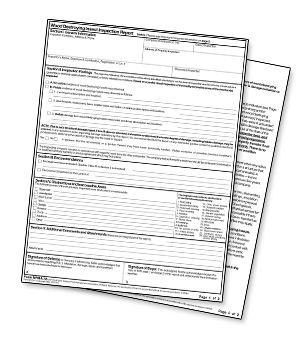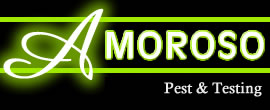 The NPMA-33 is required for CT pest inspections because it is authorized for the purposes of securing mortgages for FHA, VA, HUD, and Conventional loans and is authorized in all states. Very few states, require a specific state inspection form be used which is why the NPMA-33 is used for most real estate transactions purposes nationwide.
The NPMA-33 is required for CT pest inspections because it is authorized for the purposes of securing mortgages for FHA, VA, HUD, and Conventional loans and is authorized in all states. Very few states, require a specific state inspection form be used which is why the NPMA-33 is used for most real estate transactions purposes nationwide.
The inspection itself is usually required because one of the parties (i.e. mortgage company, underwriter, buyer, seller, federal or state municipalities etc.) requests that it be performed as a transaction contingency.
WDI can infest a structure at any time in Connecticut including following treatment. Wood boring insects can survive in a structure following treatment and reinfestation can occur at any time which is why a pest inspection can become imperative.
The NPMA-33 form includes visual inspection of the readily accessible areas of your home or property for WDI (Wood Destroying Insect) infestation. They are looking for evidence from:
1) Termites
2) Carpenter ants
3) Carpenter bees
4) Wood boring beetles
The NPMA-33 limits visible WDI evidence to the following eight forms:
1) Live insects
2) Dead insects
3) Insect parts
4) Frass
5) Shelter tubes
6) Exit holes
7) Staining
8) Visible damage caused by WDI (The report does include a structural assessment)
Please don’t be lead to believe that the CT inspection company can enforce any kind of treatment. If the parties involved in the transaction elect to have treatment that is something that should be negotiated among them. The inspecting company has no control over what must take place once damage or live infestations are found. Most lenders however, will require treatment before they give a clear to close the transaction.
Wood destroying insects can infest any structure at any time in our state. A structure containing absolutely no visible evidence can have an extensive wood boring insect infestation and damage which remains undetected because it is concealed or hidden due to obstructions or inaccessible areas.
What does “visual inspection of the readily accessible areas” mean?
It means that the NPMA-33 is limited to visual inspection and that the visual inspection is limited to the areas which were readily accessible at time of inspection. Readily accessible is defined as: “easily approached and viewed without any hesitation or delay.”
The CT pest inspector is also looking for evidence of previous infestation:
- Drill holes in a pattern consistent with that of a termite treatment
- Termite baiting stations installed
- Drill holes in exposed framing, which would indicate, outdated treatment methods popular prior to the mid 1950s
If the CT property owner has appropriate documentation showing that the structure has been previously treated for termites using a liquid termiticide (a pesticide labeled for termites) within the previous five (5) years, he or she should provide the inspector with a copy. Whether or not the treatment documentation satisfies the transaction requirements or the buyer is not up to the inspector. As a Connecticut property owner you have the sole burden-of-proof regarding proper treatment and treatment verification.
If you need an inspection on the NPMA-33 form give us a call today. 888-558-1574



